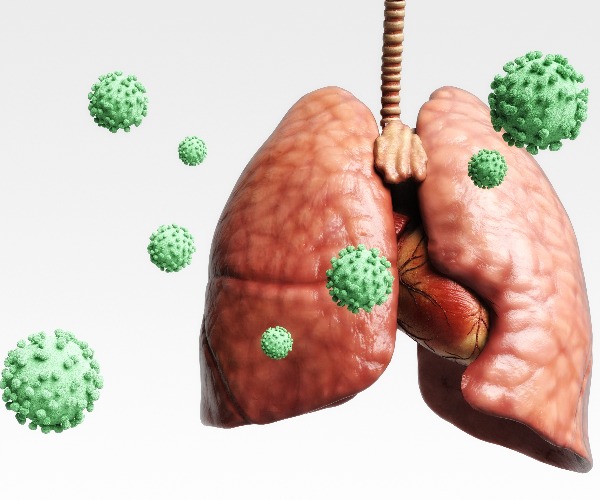Experts: Virus twice as infectious as previously believed
By David A. Patten From Newsmax

A new analysis by scientists at the Los Alamos National Laboratory published Wednesday in an online Centers for Disease Control and Prevention (CDC) journal reveals the coronavirus appears to be more than twice as infectious as previously believed.
The infectiousness of the SARS-CoV-2 virus that causes the COVID-19 disease currently overwhelming the global medical system was initially assessed at 2.2, meaning that without social distancing a person with the disease would infect slightly more than two others. The seasonal flu, by comparison, has an infectious rate of about 1.28.
Why does the infectious rate matter? The more infectious a virus, the more drastic the steps a society must take, absent a vaccine, to keep the virus from spreading. A drastically higher infectious rate, as indicated in the study released Wednesday, could mean the U.S. economy would have to be shut down significantly longer to prevent a second wave of the pandemic. And some economists are already suggesting that unless a semblance of normal economic activity resumes by May, the U.S. economy will nosedive into a depression.
The more doctors and scientists have studied SARS-CoV-2, the higher the estimated rate of infection has climbed. In February, studied abstracted on the World Health Organization’s site estimated an infectious rate of 2.2. A March 30 paper by mathematicians and doctors at the Imperial College of Londonindicated the infectious rate — a metric known to epidemiologists as “R-naught” or “R0” — is actually 3.87.
Both of those numbers, however, pale in comparison to the study published Wednesday on the “Emerging Infectious Diseases” site of the Centers for Disease Control and Prevention, which concluded the actual rate of infection is about 5.7. In statistical terms, they have 95 percent statistical confidence that the disease’s actual reproduction rate falls between 3.8 on the low end, and a stunning 8.9 on the high end.
The analysis, titled “High Contagiousness and Rapid Spread of Severe Acute Respiratory Syndrome Coronavirus 2,” immediately caught the attention of high-profile disease experts such as Eric Feigl-Ding of Harvard Medical School. He called it “a considerably different level of infectiousness.”
“Wowzers,” he tweeted. “This much higher SARSCoV2 RO value carries a lot of implications for vaccines, treatments, and containment measures needed.”
According to Fiegl-Ding, an infectious rate of 2.2 would mean that once 55 percent of the population had achieved immunity, either by receiving a vaccine or contracting the actual disease, the disease would naturally fade out.
But when you increase the infectiousness to 5.7, fully 85 percent of the population would require immunity before officials could rest assured a second wave of the disease would not follow the relaxation of social-distancing restrictions.
According to the Los Alamos study, a structural analysis of the virus “suggests SARS-CoV-2 has a much higher affinity to the receptor needed for cell entry than the 2003 SARS virus, providing a molecular basis for the high infectiousness.”
The study adds that “quarantine and contact tracing of symptomatic persons can be effective when the fraction of unidentified persons is low. However, when 20 percent of transmission is driven by unidentified infected, high levels of social distancing efforts will be needed.”
A massive testing program in Iceland recently found that up to half of coronavirus victims either have no symptoms – meaning they are asymptomatic but may still transmit the disease — or they assumed their symptoms were caused by something else.
The combination of much higher infectiousness than previously realized, combined with the asymptomatic tendency of the disease, means reopening society could be much more difficult until adequate vaccines are developed, which may not arrive until this fall.
It’s important to realize, however, that the infectiousness of the virus isn’t static. Weather and environment can push the number up or down. Also, as people become aware of a particular virus, they’re more likely to have themselves tested, treated, and quarantined before infecting others. Thus, social distancing also reduces infectiousness.
© 2020 Newsmax. All rights reserved.
For more on this story go to: https://www.newsmax.com/health/health-news/virus/2020/04/08/id/961980/?ns_mail_uid=6952f1f9-507d-4a20-8cc0-0a1db158d76e&ns_mail_job=DM103883_04092020&s=acs&dkt_nbr=0101023us024





